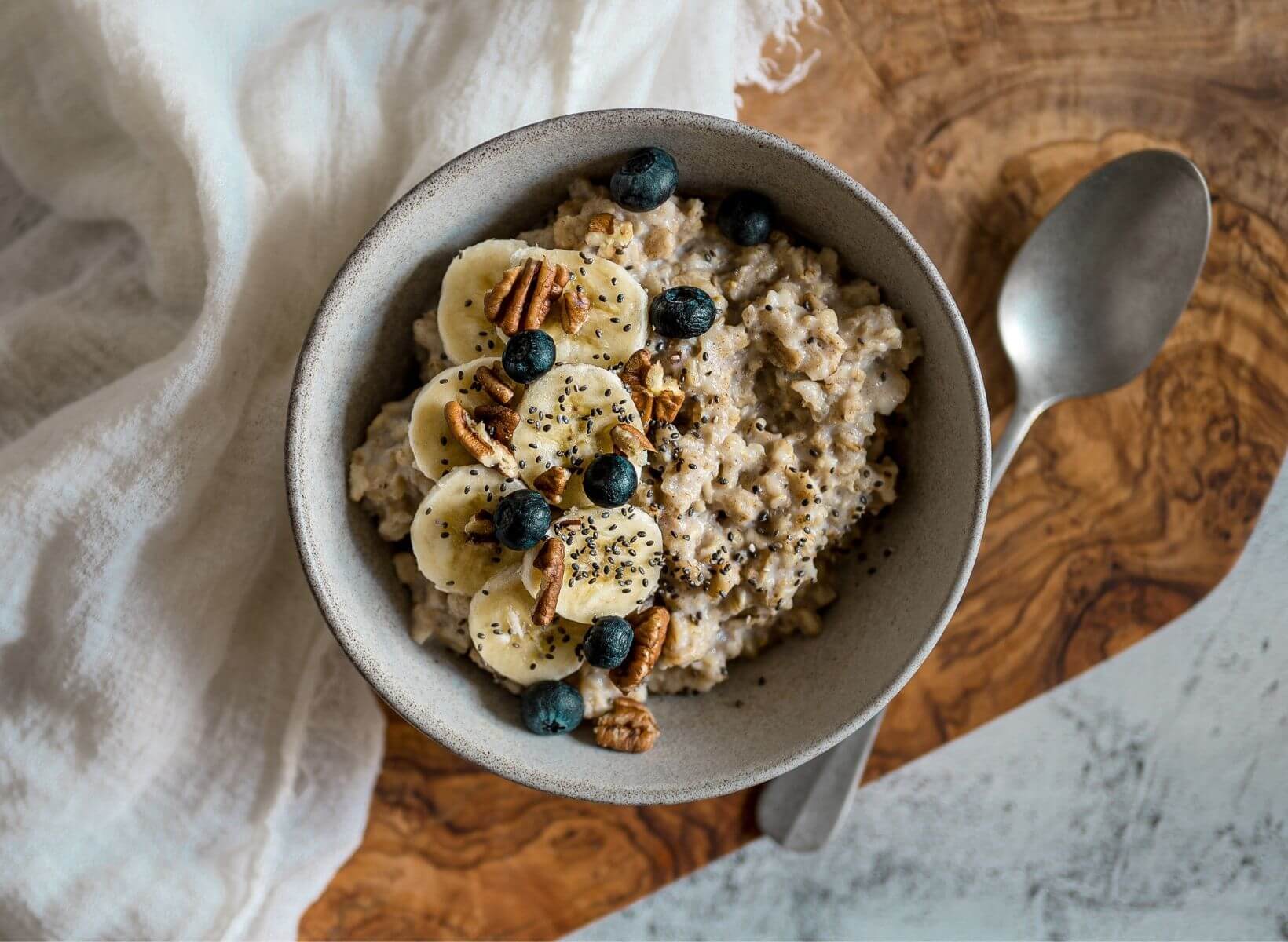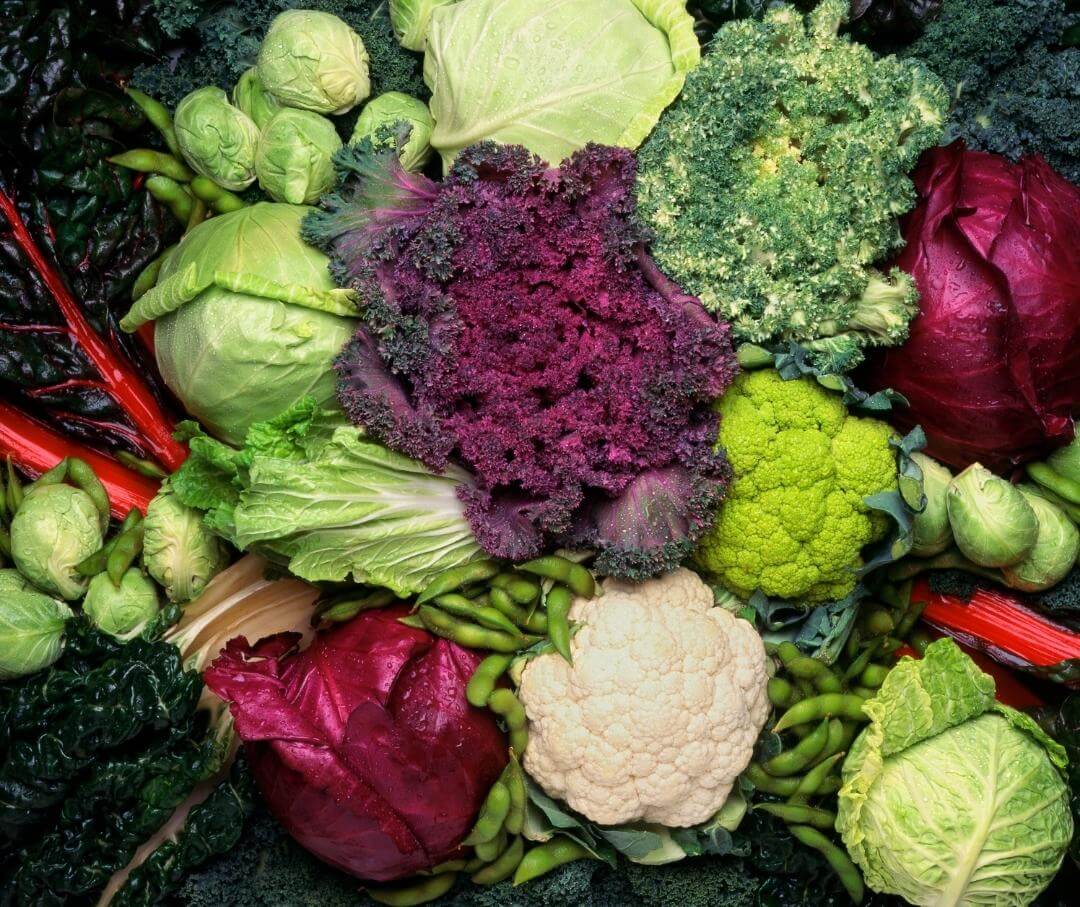The Diabetes Plate Method is a simple way to balance food groups at every meal to manage your blood sugar levels.
{{mid-cta}}
Diabetes Plate Method Explained
For those living with diabetes, getting adequate nutrition is central to staying healthy and managing symptoms. Balancing blood glucose is especially important for people with diabetes, and with correct meal design, diabetics can prevent symptoms, lose weight, and even enter remission.1
Diabetes Plate Method: A Definition
The Diabetes Plate Method is designed to help those living with diabetes create well-portioned and balanced meals. Using its easy pie chart visual, ratios of food groups can be optimized to balance blood sugar levels. The Diabetes Plate Method offers a simple way to visually determine whether there is a balance of vegetables, protein, and carbohydrates on your plate without weighing food, measuring portions, or counting macros. Those who use insulin will still need to track carbohydrates but can still benefit from the diabetes meal planning method.
This method is based on the MyPlate plan, which was designed to communicate how to create balanced meals for all Americans. In contrast to MyPlate, the Diabetes Plate Method is catered specifically towards those living with diabetes and therefore has some key differences, though is just as easy to follow. It is the strategy recommended by the American Diabetes Association.
The Elements of the Diabetes Plate Method
At every meal, users of the Diabetes Plate Method portion their food and beverages onto their plates based on how they fall into four categories: vegetables, proteins, carbohydrates, and liquids. Using the Diabetes Plate Method visual guide, each food group can be correctly portioned to easily create a healthy and balanced meal. First, grab a medium-sized plate, about 9 inches across. By using a correctly sized plate, it becomes easier to measure healthy portions. Next, start filling your plate.
Non-Starchy Vegetables
Vegetables are full of vitamins, minerals, and fiber which make them essential parts of a healthy diet. Though almost all types of vegetables offer these nutrients, non-starchy vegetables have fewer carbohydrates than starchy ones, making them less likely to raise your blood sugar. Fill half of your plate with non-starchy vegetables like broccoli, cauliflower, eggplant, mushrooms, asparagus, or salad greens.
Protein
Protein offers long-lasting energy, is a key building block for our bodies, and keeps us satiated.2 The Diabetes Plate Method recommends one-fourth of your plate be filled with lean protein foods like fish, chicken, turkey, lean beef, eggs, cottage cheese, and tofu. Lean proteins have less saturated fats than other types of protein, making them a better choice for reducing the risk of heart disease.
For those who are vegetarian, nuts, beans, lentils, and edamame can also fill this section. However, take note that some of these plant-based proteins are also high in carbohydrates and should be taken into account for the next section.
Carbohydrates
Grains, fruit, starchy vegetables, milk, beans, and legumes are all carbohydrate foods. These foods increase blood glucose levels the most, but by limiting them to one-quarter of the plate and pairing them with other food groups, you can benefit from their many nutrients and fast-acting energy without spiking your glucose.
Whole grains like brown rice, oats, polenta, quinoa, and whole-grain bread and pasta are known to provide more nutrients than refined grains. They are also considered slow-digesting carbs and have a lower glycemic index, which means they are a better choice than simple carbs for preventing glucose spikes.3 Starchy vegetables include squash, peas, and sweet potatoes, while dairy products can include milk, yogurt, and milk substitutes. Bean and legume choices can include pinto, black, and kidney beans or hummus.
Water or Low-Calorie Drink
It’s all too easy to unknowingly consume high amounts of sugar through store-bought drinks. Opt for water or beverages you know aren’t sweetened, like unsweetened tea, sparkling or flavored water, or unsweetened coffee.
Many times the dishes we cook don’t fall neatly into one of the four food group categories. When making dishes with ingredients from different categories, you can still align your meals with the Diabetes Plate Method by doing your best to choose or create recipes that keep the method’s suggested food group ratios.
<p class="pro-tip"><strong>Learn More: </strong><a href="can-diabetes-cause-high-blood-pressure">Can Diabetes Cause High Blood Pressure? Tips to Cope</a>.</p>
Pros and Cons of the Diabetes Plate Method

Like any healthy lifestyle strategy, the Diabetes Plate Method may work well for some and less so for others. Here are some pros and cons that might determine if it is a good fit for you.
Pros
- Stabilizes Blood Sugar Levels: With well-balanced ratios of vegetables, protein, carbs, and water at every meal, diabetics can balance their blood sugar long-term.
- Manages Portion Size Effectively: The plate size and food portions recommended by the Diabetes Plate Method help guide portioning. This can help people manage their weight and ensure they are getting all the right nutrients.
- Prevents Glucose Level Fluctuations: Because each food group has different effects on blood glucose, using the Diabetes Plate Method can help users make sure they are eating the optimal ratio for minimizing glucose level fluctuations.
- Facilitates a Gradual Dietary Shift: Provides a simple and easy format for creating balanced meals that apply to all types of diabetes-friendly foods. In contrast to more complicated methods that rely on macro-tracking and quantity-counting, the Diabetes Plate Method can create an easy-to-implement shift toward more balanced meals.
- Encourages Healthy Habit Formation: Using the Diabetes Plate Method visual aid for every meal creates a long-lasting habit.
Cons
- Omits Guidance on Added Salt and Sugar: Users are left to determine the amount of salt and sugar to add to their food, which could lead to over-consumption.
- Neglects Individual Energy Needs: While giving guidance on portion sizes can be helpful, the amount of food each person needs varies greatly depending on weight, height, and activity level, among other factors.
- Requires Personalization Based on Dietary Factors: In addition to portion sizes, different people may need different food group ratios. For example, those who are building muscle likely need more protein.4 Plates need to be customized based on individuals’ age, gender, activity levels, and dietary needs.
- Presents Challenges for Vegetarians and Vegans: Sourcing protein from plants can require alterations to the Diabetes Plate Method because vegan plant-based protein sources like beans and legumes tend to be lower in protein than animal-based products and higher in carbohydrates. If you are opting for plant-based protein sources, make sure to serve enough to meet your protein needs and consider cutting back on other carbohydrates.
Learn How to Improve Your Nutrition and Monitor Your Glycemic Index Levels With Signos’ Expert Advice.
Stabilizing blood glucose is central to managing diabetes and improving overall health and longevity. With the next generation of continuous glucose monitors and Signos’ expert guidance, you can incorporate changes into your nutrition and lifestyle based on real-time personalized blood glucose data. Learn about Signos’ science-backed approach to achieving better health, weight loss, and more. See how Signos works to pair continuous glucose monitoring, an all-in-one app experience, and expert advice to help you reach your health goals. Take a quick quiz to see if Signos is right for you.
<p class="pro-tip"><strong>Also Read: </strong><a href="diabetes-weight-loss">Explaining the Correlation Between Diabetes and Weight Loss</a>.</p>
- Item 1
- Item 2
- item 3
Topics discussed in this article:
References
- Gregg, E. W.; Chen, H.; Wagenknecht, L. E.; Clark, J. M.; Delahanty, L. M.; Bantle, J.; Pownall, H. J.; Johnson, K. C.; Safford, M. M.; Kitabchi, A. E.; Pi-Sunyer, F. X.; Wing, R. R.; Bertoni, A. G.; Look AHEAD Research Group, for the. Association of an Intensive Lifestyle Intervention With Remission of Type 2 Diabetes. JAMA 2012, 308 (23), 2489–2496. https://doi.org/10.1001/jama.2012.67929.
- Ortinau, L. C.; Hoertel, H. A.; Douglas, S. M.; Leidy, H. J. Effects of High-Protein vs. High- Fat Snacks on Appetite Control, Satiety, and Eating Initiation in Healthy Women. Nutrition Journal 2014, 13 (1), 97. https://doi.org/10.1186/1475-2891-13-97.
- Carbohydrates and Blood Sugar. Harvard School of Public Health. https://www.hsph.harvard.edu/nutritionsource/carbohydrates/carbohydrates-and-blood-sugar/ (accessed 2024-01-16).
- Wu, G. Dietary Protein Intake and Human Health. Food Funct 2016, 7 (3), 1251–1265. https://doi.org/10.1039/c5fo01530h.


.jpg)




























